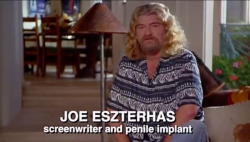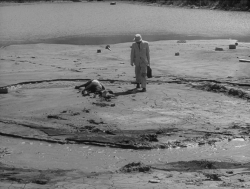Reviews
John G. Avildsen
USA, 1976
Credits
Review by Victoria Large and Sam Bett
Posted on 03 February 2011
Source MGM Home Video VHS
Categories Blind Spots
You’re gonna eat lightnin’ and you’re gonna crap thunder!
Introduction by Victoria Large
When I was about eleven years old, and my brother was about thirteen, he decided that he wanted to watch all of the Rocky movies. My parents indulged my brother and the whole family watched Rocky and its first four sequels on VHS. My brother was instantly a Rocky diehard, but as a middle schooler uncommonly infatuated with the both the word “cynical” and the concept of being a cynic, I carried some skepticism.
In Rocky, when the scrappy boxer confessed to his girlfriend Adrian that he didn’t care about winning, only going the distance, I braced myself. I knew Rocky would go the distance but lose. (I was terribly satisfied at being right.) As we got into sequel territory, I grew particularly impatient with the patriotic dazzle of Rocky IV; it was just so obvious that he would beat the big Russian guy. I was still more contemptuous of Rocky V, which concluded with a preposterous street fight.
But something happened. My brother got a box set of Rocky movies on tape for Christmas and we developed the somewhat curious tradition of watching at least one of them every Christmas, usually more. This went on for years, and eventually I came to love the whole series. Yes, the sequels can be a bit preposterous, but as the years passed I grew more willing to embrace a bit of big-hearted, high-spirited preposterousness in my movies.
And it’s important to remember that the original Rocky, which I’ve seen the most often and which looms largest in my affections, is far from being the goofy testosterone-fest that the uninitiated might expect, and that some of the sequels became. Rocky is a strikingly human drama about supposed losers learning how to win. It’s the characters that make the picture. So many of them are down and out and desperate for something else, something good: our eponymous hero, certainly, but also skittish Adrian and her hapless older brother Paulie, not to mention Rocky’s aging trainer Mickey, inhabited by Burgess Meredith and nearly as fondly remembered as Rocky himself.
It isn’t just about the fight scenes. Rocky’s greatest charms lie in small, honest moments between its characters. My favorite line from the film comes just after the climactic fight, when Rocky and Adrian are reunited. Bruised and bleeding, the fighter asks his girlfriend, “Where’s your hat?” Really. “Where’s your hat?” It’s such a sweetly trivial concern and so unexpected that it could melt the heart of any cynic. If that isn’t victory, I don’t know what is.
Review by Sam Bett
By the time I was born, Rocky was ten years old, and three of its sequels had come and gone from the theaters. I never had the chance to see any of them on the big screen, and I do not remember begging to rent these films on family trips to Blockbuster. So much of our adult tastes depend on what we are exposed to without asking, but neither family nor friends ever proposed we sit down and watch Rocky. Still, I feel as if I have been aware of its existence as long as I have known about movies. My earliest cloudy associations with the name Rocky group it loosely with Rambo, Terminator, Conan the Barbarian and other “fighting movies.” No memory persists of my parents deeming them unacceptable or refusing requests to see them, yet somehow I never saw these movies, and never really desired to. Since then I have seen Terminator and dozens of Japanese fighting movies, but Rocky had till now remained a blind spot. When I chose to write about it for this feature, I still expected to see a fighting movie—something not necessarily as sweaty and bloody as Rambo (which I still have not seen), but packed with lead-fisted punches, black eyes, swearing, and what seems like hours of ringside footage.
I was not expecting a sensitive love story. If I had seen Rocky as a child or even a teenager, I think I would have tried to ignore the significance of the romantic aspects of the plot. However, romance carries so much of the storyline that I can’t imagine liking the movie if I had only focused on the boxing. True, the training period that brings Rocky Balboa from the docks to prime time television in his preparation to fight world heavyweight champion Apollo Creed provides the film with its basic structure and appeals to the archetypal American aspiration to battle your way from the streets to the top, but the love story between Rocky and shy pet store clerk Adrian Pennino is what makes the film consistently engaging, familiar, and believable.
Rocky thinks of himself as a thug, but in a self-deprecating way. On the clock as a cash collector for a loan shark, he is too sensitive to bring himself to break a man’s thumbs even when his boss demands it. When he comes home from work to his worn out apartment, he is even softer. Half in the dark, he puts on a record of easy listening music, has a conversation with his pet fish, and sets their fishbowls side-by-side so they can see each other. Rocky shares this affection for animals with fellow boxer and dockside tough Terry Malloy, played by Marlon Brando in On the Waterfront. When not working at the docks, Terry cares lovingly for his pet pigeons in their rooftop roost. While interactions with pets reveal the sensitive sides of both Hollywood pugilists, what distinguishes Rocky is the direct association between his pets and his love interest. Rocky visits the pet store where Adrian works twice a day, greeting her with a joke that he practiced earnestly the night before in front of his living room mirror. While his affection for his pets is sincere, it is apparent that it is an extension of his infatuation with Adrian. To talk to her he has to have an excuse, like buying pet food or a rock for his turtles to climb on. Fumbling and awkward, Rocky reminds us of the nervous teenage habits we never grew out of but learned to conceal. He is unable to hide his lack of composure when he finally musters the courage to invite Adrian to a basketball game, but he still makes a go for it. These moments of resolve in the face of everyday doubt and discouragement bolster our confidence in Rocky, translating the otherwise unfamiliar circumstances of his training saga into language we can all understand.
The most topically significant question I brought to my first viewing of Rocky was “Who is ‘Adrian!’?” As it turns out, the story’s answer to this question is one of the most arresting developments of the film. When we first encounter Adrian, she is a mousy, skittish, quiet store clerk who barely responds to Rocky’s jokes and respectful flirtations. Then suddenly, she transforms into a romantically confident woman with a heart capable of supporting Rocky through his upward struggle. The metamorphosis is instantaneous. When Adrian is about to leave Rocky’s apartment, he asks her to take off her glasses so he can see her face, then to take off her hat so he can see her hair. He then asks for just one kiss, adding in his stumbling way, “You don’t have to kiss me back.” When she does, she clings to Rocky and kisses with a passionate intensity that reveals a new Adrian, steady and sensual.
This sudden character change feels genuine and natural because by the time the two kiss we are certain that being with Adrian is at least as important to Rocky as fighting Apollo Creed. In a midnight confession, Rocky admits to her that he doesn’t believe he can beat the champion, but needs to try his best, to “go the distance” in order to prove that he’s not just another nobody from the neighborhood. Fighting Apollo Creed makes Rocky somebody in an enormous way, but being with Adrian validates him in a life-sized, familiar one. The couple provides each other with the emotional support and mutual satisfaction that we all desire in a relationship. Rocky puts it best when he describes why he and Adrian get along so well to Paulie, Adrian’s brother and Rocky’s bar buddy: “She’s got gaps, I got gaps, together we fill gaps.”
Since I have seen countless parodies of Rocky’s famous training montage, I was eager throughout my viewing experience to see where it would fit in. Rocky begins with a false alarm: the regal trumpets that signal the start of the montage also sound off in the film’s opening frames, teasing those of us who have heard the score before. And who hasn’t? Our household familiarity with this film’s music is perhaps what is most remarkable about viewing Rocky today versus when it was first released. The famous melody of Rocky’s score echoes throughout the film, appearing in various forms throughout the score, at times subtle and arrhythmic, at others with prophetic, latent power. Only during the classic montage, however, is the theme allowed room to resound at peak intensity. Placing the score’s crescendo in this montage is quite fitting, since this sequence contains some of the most memorable images in the film: action shots of Rocky boxing with giant sides of beef, a tracking shot of the fighter running alongside barges by the waterfront, and most of all the final, ascending shot where he sprints up the palatial steps of the Philadelphia Museum of Art. My friend Steve who used to live in Phillie says that on any hour any given day, there is always someone running up those steps and raising their fists to the sky in victory.
After seeing this oft-emulated scene in its original context, I understand the desire to share in Rocky’s temporary ecstasy as he looks over the expansive parks and the early traffic extending into the skyscrapers of the city. What struck me most about this montage is its brevity. After its rapid catalog of backdrops and exercises set across Philadelphia, it ends. More total time is probably spent in early scenes at the pet shop. This precise alacrity of expression is what makes the montage so exceptional: it conveys Rocky’s turbo-boosted speed and agility through its own agile, rapid execution.
Rocky ends with a disavowal of sequels that grants it a sense of independence and authority often held by the first film of a series. After the bell rings to signal the end of the seemingly endless fight, Rocky yells to the press flooding the stage, “I don’t want no rematch.” Despite the enormity of his achievement - being the first to battle Apollo Creed until the final bell, breaking his competitor’s ribs and his undefeated reputation - all he can say when the fight is over is “Adrian!” Magically, Adrian appears in the bleachers and responds - “Rocky” - her voice audible and clear over the din of the arena. The girl who once barely responded to his jokes now meets him in his personal victory, embraces him, and says “I love you.” Rocky reciprocates, and these are the film’s last words. Now that we have Rocky II, III, IV and V, we know this is not really the end, but 1976 audiences would have taken this as the conclusion of the story. Love is Rocky’s bottom line.
More Blind Spots
-
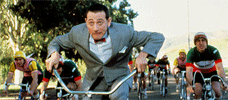
Pee-wee’s Big Adventure
1985 -

The Matrix
1999 -

Amélie
2001 -
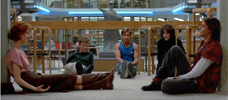
The Breakfast Club
1985 -
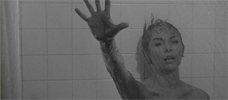
Psycho
1960 -
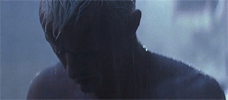
Blade Runner
1982 -
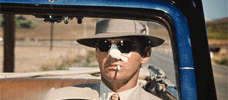
Chinatown
1974 -
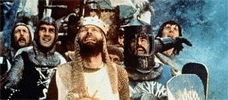
Monty Python and the Holy Grail
1975 -

Rocky
1976 -
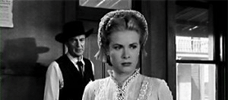
High Noon
1952 -

Ferris Bueller’s Day Off
1986 -
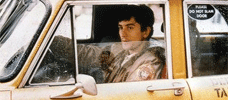
Taxi Driver
1976 -
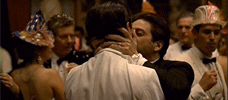
The Godfather
1972 -

E.T.
1982 -

Pulp Fiction
1994
We don’t do comments anymore, but you may contact us here or find us on Twitter or Facebook.

